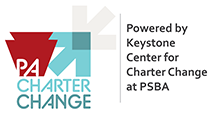Research Brief: How States Fund Charter Schools
National School Boards Association – Center for Public Education, 2021
Charter schools are public schools of choice, according to the Nation’s Report Card (NAEP). The U.S. Department of Education uses the term “public charter school.” A public charter school is a publicly funded school that is typically governed by a group or organization under a legislative contract—a charter— with the state, district, or other entity. The first law allowing the establishment of public charter schools was passed in Minnesota in 1991. As of January 2020, charter school legislation had been passed in 45 states and the District of Columbia. The states without public charter school legislation are Montana, Nebraska, North Dakota, South Dakota, and Vermont. In general, states fund charter schools through the following channels:
- Same state formula as funding traditional public schools.
- Eligibility for federal/state grants and/or categorical programs.
- Different funding sources based on authorizers or types of charter schools.
- Calculation methods that differ from distributing funds for traditional public schools
Click here to read more.
